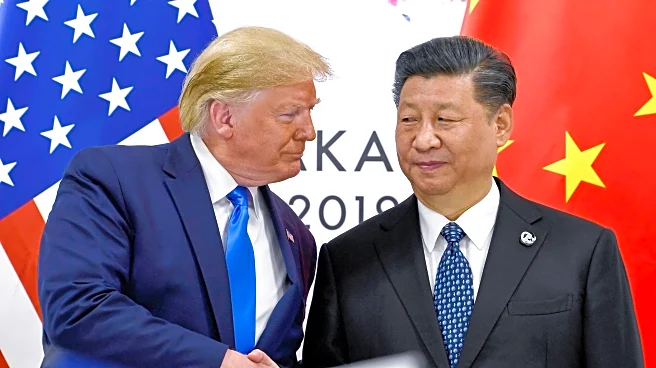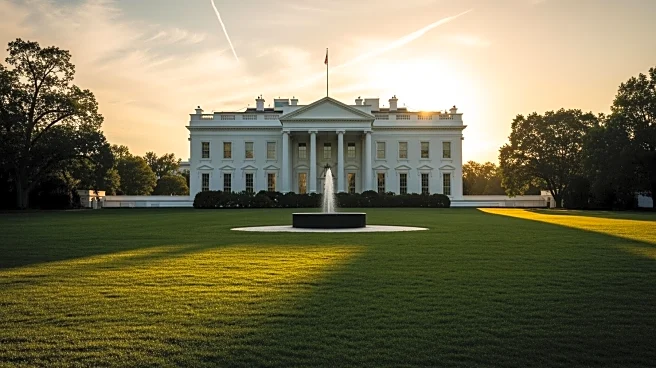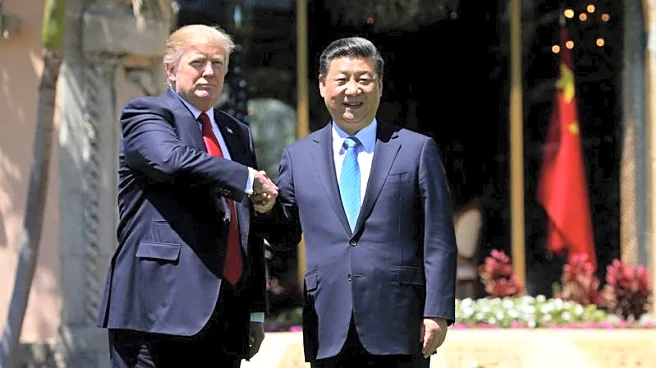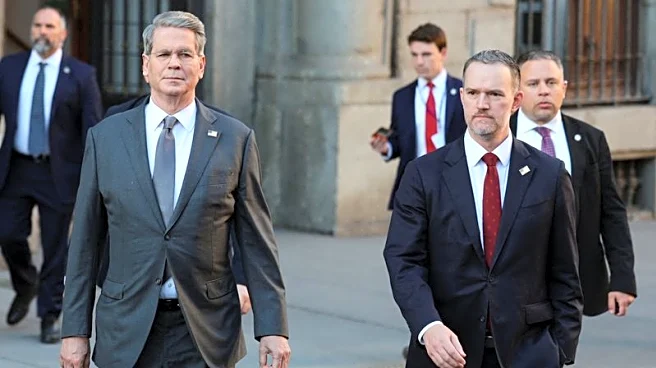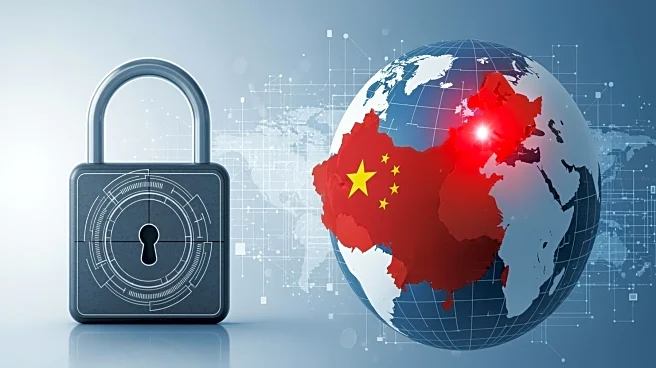What's Happening?
The U.S. Trade Representative, Jamieson Greer, announced an investigation into China's adherence to the 2020 trade agreement, which was initially hailed by President Trump as a significant breakthrough.
This development coincides with President Trump's scheduled visit to Asia, where he plans to meet with Chinese President Xi Jinping to address ongoing trade tensions. The investigation aims to assess whether China has fulfilled its commitments, particularly in purchasing U.S. exports like soybeans. The trade relationship has been strained by mutual trade restrictions and threats of new tariffs, with the U.S. considering a 100% tariff on Chinese goods. The investigation is conducted under Section 301 of the Trade Act of 1974, targeting unfair trading practices.
Why It's Important?
The investigation into China's compliance with the trade deal is crucial as it could impact the economic relationship between the world's two largest economies. The outcome may influence U.S. trade policy and affect industries reliant on exports to China, such as agriculture. The potential for increased tariffs and trade restrictions could exacerbate tensions, affecting global markets and economic stability. Stakeholders, including U.S. farmers and businesses, may face uncertainty regarding future trade conditions. The investigation underscores the ongoing challenges in U.S.-China trade relations and the broader geopolitical implications of economic diplomacy.
What's Next?
The U.S. Trade Representative has scheduled a public hearing for December 16, which could lead to further trade sanctions on China. The investigation's findings may prompt additional tariffs, impacting bilateral trade and potentially leading to retaliatory measures from China. President Trump's meeting with Xi Jinping may offer a platform for negotiation, but the outcome remains uncertain. The evolving trade dynamics will require careful navigation by policymakers to balance economic interests and diplomatic relations. Businesses and industries affected by trade policies will need to adapt to potential changes in export conditions and market access.


